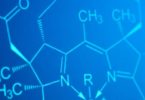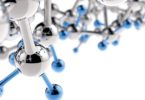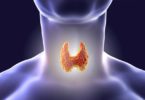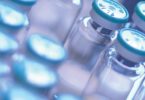Stoichiometry Multiple Choice Questions and Answers
On electrical decomposition of 150 ml dry and pure O2, 10% of O2 gets changed to O, then the volume of gaseous mixture after reaction and volume of remaining gas left after passing in turpentine oil will be
(a) 145 ml
(b) 149 ml
(c) 128 ml
(d) 125 ml
The equivalent weight of phosphoric acid (H3PO4) in the reaction,
(a) 25
(b) 49
(c) 59
(d) 98
A compound possesses 8% sulfur by mass. The least molecular mass is
(a) 200
(b) 400
(c) 155
(d) 355
The law of multiple proportions was proposed by
(a) Lavoisier
(b) Dalton
(c) Proust
(d) Gay-Lussac
What volume of Hydrogen gas, at 273 K and 1 atm pressure will be consumed in obtaining 21.6 g of elemental boron (atomic mass = 10.8) from the reduction of boron trichloride by Hydrogen?
(a) 22.4 L
(b) 89.6 L
(c) 67.2 L
(d) 44.8 L
Related: Skin function and anatomy quiz
12 g of Mg (at. mass 24) will react completely with acid to give
(a) One mole of H2
(b) 1/2 mole of H2
(c) 2/3 mole of O2
(d) Both 1/2 mol of H2 and 1/2 mol of O2
1 L of N2 combines with 3 L of H2 to form 2L of NH3 under the same conditions. This illustrates the
(a) Law of constant composition
(b) Law of multiple proportions
(c) Law of reciprocal proportions
(d) Gay-Lussac’s law of gaseous volumes
Calculate the weight of lime (CaO) that can be prepared by heating 200 g of limestone that is 95 % pure CaCO3.
(a) 160.4 g
(b) 206.2 g
(c) 360.2 g
(d) 106.4 g
The element similar to carbon is
(a) Mg
(b) Mn
(c) Sn
(d) Po
How many grams of caustic potash is required to completely neutralize 12.6 gm HNO3
(a) 22.4 KOH
(b) 1.01 KOH
(c) 6.02 KOH
(d) 11.2 KOH
Related: Permutation and combination quiz
An astronaut receives the energy required per hour by the combustion of 34 g of sucrose present in his body. How much oxygen should he carry along with him for his energy requirements in a day ?
(a) 761.12
(b) 861.21
(c) 916.21
(d) 1016.12
The simplest formula for a compound containing 50% of element X (atomic mass 10) and 50% of element Y (atomic mass 20) is
(a) XY
(b) X2Y
(c) XY3
(d) X2Y3
One sample of atmospheric air was found to have 0.03% of carbon dioxide and another sample 0.04%. This is evidence that
(a) The law of constant composition is not always true.
(b) The law of multiple proportions is true
(c) Air is a compound
(d) Air is a mixture
Calculate the volume of hydrogen liberated at 27°C and 760 mm pressure by treating 0.6g of magnesium with excess of hydrochloric acid (given that 1 g of hydrogen occupies 11.2 liters at S.T.P. and Mg = 24)
(a) 2.216 L
(b) 1.651 L
(c) 1.850 L
(d) 0.615 L
One part of an element A combines with two parts of another B. Six parts of the element C combine with four parts of the element B. If A and C combine together, the ratio of their weights will be governed by
(a) Law of definite proportion
(b) Law of multiple proportion
(c) Law of reciprocal proportion
(d) Law of conservation of mass
Related: S and p block important questions
A solid element ‘X’ has an atomic weight of 32 and burns in excess of oxygen to form a gaseous oxide ‘Y’. The volume after combustion is equal to the volume before combustion. The vapor density of ‘Y’ is 32. The number of atoms of oxygen that combine with one molecule of ‘Y’ are___.
(a) 4
(b) 2
(c) 1
(d) 3
The maximum amount of BaSO4 precipitated on mixing equal volumes of BaCl2 (0.5 M) with H2SO4 (1M) will correspond to
(a) 0.5 M
(b) 1.0 M
(c) 1.5 M
(d) 2.0 M
Hydrochloric acid solutions A and B have concentrations of 0.5 N and 0.1 N respectively. The volume of solutions A and B required to make 2 liters of 0.2 N hydrochloric are
(a) 0.5 l of A + 1.5 l of B
(b) 1.5 l of A + 0.5 l of B
(c) 1.0 l of A + 1.0 l of B
(d) 0.75 l of A + 1.25 l of B
The number of significant figures in 6.02 x 1023 is
(a) 23
(b) 3
(c) 4
(d) 20
The number of equivalents of Na2S2O3 required for the volumetric estimation of one equivalent of Cu2+ is
(a) 1
(b) 2
(c) 3/2
(d) 3
Related: Quantum Physics questions and answers
A mixture of ZnCl2 and PbCl2 can be separated by
(a) Distillation
(b) Crystallization
(c) Sublimation
(d) Adding aceitic acid
The number of moles of sodium oxide in 620 g of it is
(a) 1 mol
(b) 10 moles
(c) 18 moles
(d) 100 moles
2.76 g of silver carbonate on being strongly heated yield a residue weighing
(a) 2.16 g
(b) 2.48 g
(c) 2.28 g
(d) 2.32 g
The volume occupied by 4.4 g of CO2 at STP is
(a) 22.4 L
(b) 2.24 L
(c) 0.224 L
(d) 0.1 L
0.16 g of dibasic acid requires 25 ml of decinormal NaOH solution for complete neutralization. The molecular weight of the acid will be
(a) 32
(b) 64
(c) 128
(d) 256
Related: Microbiology exams and answers
What weight of SO2 can be made by burning sulfur in 5.0 moles of oxygen?
(a) 640 grams
(b) 160 grams
(c) 80 grams
(d) 320 grams
Acidified potassium permanganate solution is decolourised by
(a) Bleaching powder
(b) White vitriol
(c) Mohr’s salt
(d) Microcosmic salt
12g of Mg (at. mass 24) on reacting completely with acid gives hydrogen gas, the volume of which at STP would be
(a) 22.4 L
(b) 11.2 L
(c) 44.8 L
(d) 6.1 L
To neutralise 20 ml of M / 10 sodium hydroxide, the volume of M / 20 hydrochloric acid required is
(a) 10 ml
(b) 15 ml
(c) 20 ml
(d) 40 ml
If we consider that 1/6, in place of 1/12, the mass of the carbon atom is taken to be the relative atomic mass unit, the mass of one mole of a substance will
(a) Decrease twice
(b) Increase two fold
(c) Remain unchanged
(d) Be a function of the molecular mass of the substance
Related: Kinematics practice test with answers
30 ml of acid solution is neutralized by 15 ml of a 0.2 N base. The strength of acid solution is
(a) 0.1 N
(b) 0.15 N
(c) 0.3 N
(d) 0.4 N
The approximate atomic weight of an element is 26.89. If its equivalent weight is 8.9, the exact atomic weight of the element would be
(a) 26.89
(b) 8.9
(c) 17.8
(d) 26.7
Which one of the following properties of an element is not variable?
(a) Valency
(b) Atomic weight
(c) Equivalent weight
(d) All of these
After a chemical reaction, the total mass of reactants and products
(a) Is always increased
(b) Is always decreased
(c) Is not changed
(d) Is always less or more
If isobutane and n-butane are present in a gas, then how much oxygen should be required for complete combustion of 5 kg of this gas
(a) 17.9 kg
(b) 9 kg
(c) 27 kg
(d) 1.8 kg
Related: Redox reaction questions and answers
What should be the weight of 50% HCl which reacts with 100 g of limestone?
(a) 50% pure
(b) 25% pure
(c) 10% pure
(d) 8% pure
A hydrocarbon contains 86% carbon, 488ml of the hydrocarbon weight 1.68 g at STP. Then the hydrocarbon is an
(a) Alkane
(b) Alkene
(c) Alkyne
(d) Arene
What will be the volume of CO2 at NTP obtained by heating 10 grams of (90% pure) limestone?
(a) 22.4 litre
(b) 2.016 litre
(c) 2.24 litre
(d) 20.16 litre
What volumes of nitrogen and hydrogen are required to produce 20 cc of ammonia gas at S.T.P.?
(a) 10cc, 30cc
(b) 10cc, 20cc
(c) 20cc, 30cc
(d) 15cc, 30cc
Mohr’s salt is dissolved in dil. H2SO4 instead of distilled water to
(a) Enhance the rate of dissolution
(b) Prevent cationic hydrolysis
(c) Increase the rate of ionization
(d) Increase its reducing strength
The equivalent weight of KMnO4 acting as an oxidant in an acidic medium is
(a) The same as its molecular weight
(b) Half of its molecular weight
(c) One-third of its molecular weight
(d) One-fifth of its molecular weight
Related: Chemical analysis – Multiple choice questions
Under similar conditions of pressure and temperature, 40 ml of slightly moist hydrogen chloride gas is mixed with 20 ml of ammonia gas, the final volume of gas at the same temperature and pressure will be
(a) 100 ml
(b) 20 ml
(c) 40 ml
(d) 60 ml
16.8 litre gas containing H2 and O2 is formed at NTP on electrolysis of water. What should be the weight of electrolyzed water?
(a) 5 g
(b) 9 g
(c) 10 g
(d) 12 g
The solution of sulphuric acid contains 80% by weight H2SO4. Specific gravity of this solution is 1.71. Its normality is about
(a) 18.0
(b) 27.9
(c) 1.0
(d) 10.0
1.12 ml of a gas is produced at STP by the action of 4.12 mg of alcohol, with methyl magnesium iodide. The molecular mass of alcohol is
(a) 16.0
(b) 41.2
(c) 82.4
(d) 156.0
1.5 mol of O2 combines with Mg to form oxide MgO. The mass of Mg (at. mass 24) that is combined is
(a) 72 g
(b) 36 g
(c) 48 g
(d) 24 g
The vapor density of a gas is 22. What is its molecular mass?
(a) 33
(b) 22
(c) 44
(d) 11
Related: tongue anatomy quiz
The normality of orthophosphoric acid having a purity of 70% by weight and specific gravity 1.54 would be
(a) 11 N
(b) 22 N
(c) 33 N
(d) 44 N
One part of an element A combines with two parts of another B. Six parts of the element C combine with four parts of the element B. if A and C combine together, the ratio of their weights will be governed by
(a) Law of definite proportion
(b) Law of multiple proportion
(c) Law of reciprocal proportion
(d) Law of conservation of mass
How many g of dibasic acid (Mol. wt. = 200) should be present in 100 ml of its aqueous solution to give decinormal strength?
(a) 1 g
(b) 2 g
(c) 10 g
(d) 20 g
M is the molecular weight of KMnO4. The equivalent weight of KMnO4 when it is converted into K2MnO4 is
(a) M
(b) M / 3
(c) M / 5
(d) M / 7






